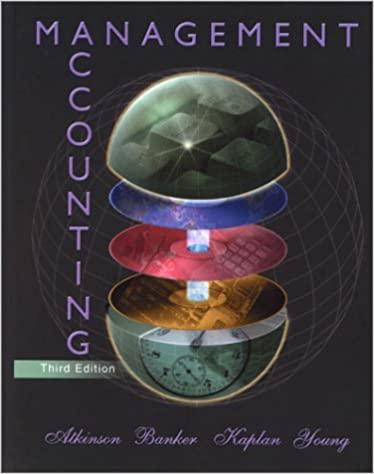Choosing an organization structure You are a senior manager responsible for overall company operations in a large
Question:
Choosing an organization structure You are a senior manager responsible for overall company operations in a large courier company. Your company has 106 regional offices (terminals) scattered around the country and a main
office (hub) located in the geographical center of the country. Your operations are strictly domestic. You do not accept international shipments.
The day at each terminal begins with the arrival of packages from the hub. The packages are loaded onto trucks for delivery to customers during the morning hours. In the afternoon, the same trucks pick up packages that are re¬ turned to the terminal in late afternoon and then shipped to the hub where shipments arrive from the terminals into the late evening and are sorted for delivery early the next day for the terminals.
Each terminal in your company is treated as an investment center and prepares individual income statements each month. Each terminal receives 30% of the revenue from packages that it picks up and 30% of the revenue from the packages it delivers. The remaining 40% of the revenue from each transaction goes to the hub. Each terminal accumulates its own costs. All costs relating to travel to and from the hub are charged to the hub. The revenue per package is based on size and service type and not the distance that the pack¬ age travels. (There are two services: overnight and ground delivery, which takes between one and seven days, depending on the distance traveled.)
All customer service is done through a central service group located in the hub. Customers access this service center through a toll-free telephone number. The most common calls to customer service include requests for package pickup, requests to trace an overdue package, and requests for billing information. The company has invested in complex and expensive package tracking equipment that monitors the package's trip through the system by scanning the bar code placed on every package. The bar code is scanned when the package is picked up, enters the originating terminal, leaves the originating terminal, arrives at the hub, leaves the hub, arrives at the destina¬ tion terminal, leaves the destination terminal, and is delivered to the cus¬ tomer. All scanning is done by handheld wands that transmit the information to the regional and then central computer.
The major staff functions in each terminal are administrative (accounting, clerical, and executive), marketing (the sales staff), courier (the people who pick up and deliver the shipments and the equipment they use), and opera¬ tions (the people and equipment who sort packages inside the terminal).
This organization takes customer service very seriously. The revenue for any package that fails to meet the organization's service commitment to the customer is not assigned to the originating and destination terminals.
All company employees receive a wage and a bonus based on the termi¬ nal s economic value added. This system has promoted many debates about the sharing rules for revenues, the inherent inequity of the existing system, and the appropriateness of the revenue share for the hub. Service problems have aiisen primarily relating to overdue packages. The terminals believe that most of the service problems relate to missorting in the hub, resulting in pack¬ ages being sent to the wrong terminals.
REQUIRED
(a) Explain why you believe that an investment center is or is not an appro¬ priate organization design in this company.
(b) Assuming that this organization is committed to the current design, how would you improve it?
(c) Assuming that this organization has decided that the investment center approach is unacceptable, what approach to performance evaluation would you recommend?
(LO 1)
Step by Step Answer:

Management Accounting
ISBN: 9780130101952
3rd Edition
Authors: Anthony A. Atkinson, Robert S. Kaplan, S. Mark Young, Rajiv D. Banker, Pajiv D. Banker





